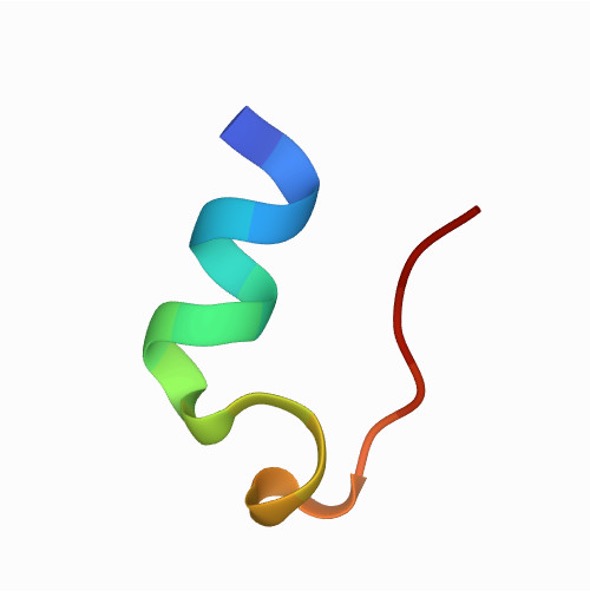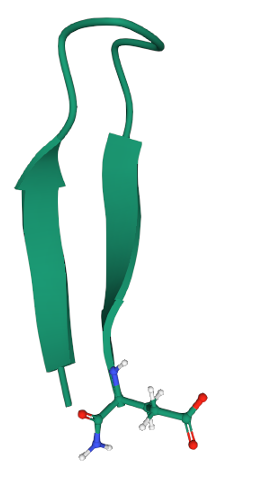Contributed by Stephen Goold, Voelz Lab
In order for molecular simulations to make accurate predictions, it is important that we constantly evaluate the quality of protein force fields. A force field is a collection of parameters that describe all of the pairwise atomic interactions in a simulation.
Many general-purpose protein force fields have been developed, and we are interested in evaluating them to see how accurate they are at predicting the conformational properties of peptides and mini-proteins in solution. To do this, we are simulating many different sequence variants of designed mini-proteins and comparing the results to experimental measurements
Projects 16959 and 16974 examine a small mini-protein called Trp-cage, designed in Niels Andersen’s lab. Despite its size, Trp-case has two well-defined states: an unfolded one and a folded one, making it a great model system to understand folding mechanisms. The Andersen lab has published experimental NMR data for 50 variants with radically different folding stabilities and rates, against which we can compare our simulation results, to see how accurately current force fields can be used for simulation-based molecular design.

Project 16969 closely examples a series of beta-hairpins. A beta-hairpin is a common structure motif found in many proteins, consisting of two strands connected by a short turn. Some short peptides can fold into stable beta-hairpins in solution, and protein engineering efforts have led to a large number of designed hairpin sequences with high-quality experimental measurements to understand how they fold. Project 16969 examines over 130 variants which span a large range of folding stabilities and rates.

